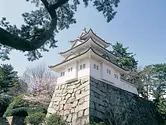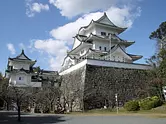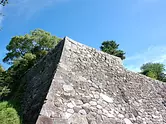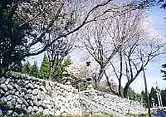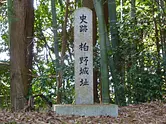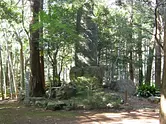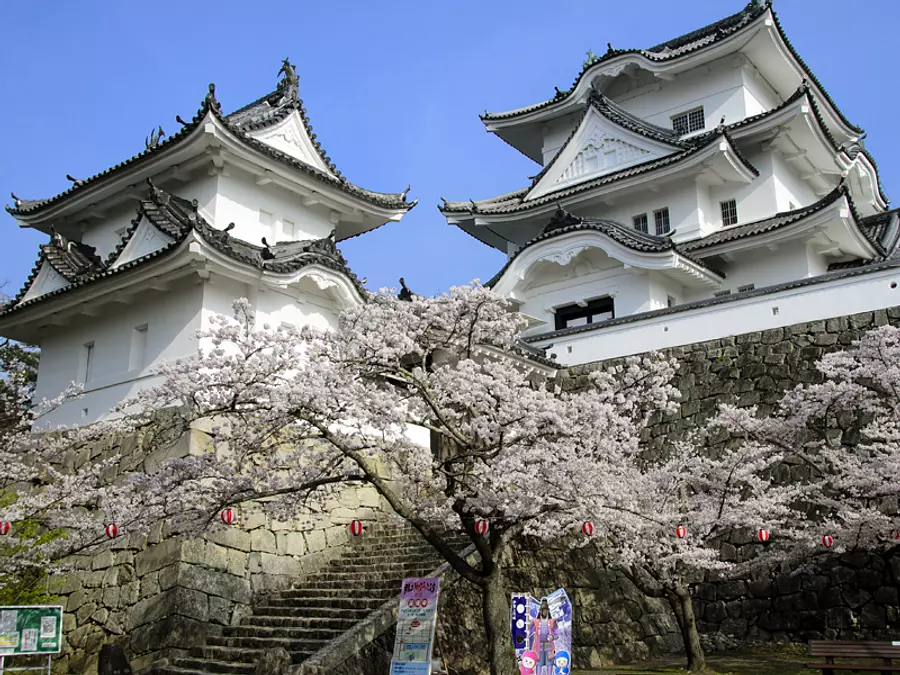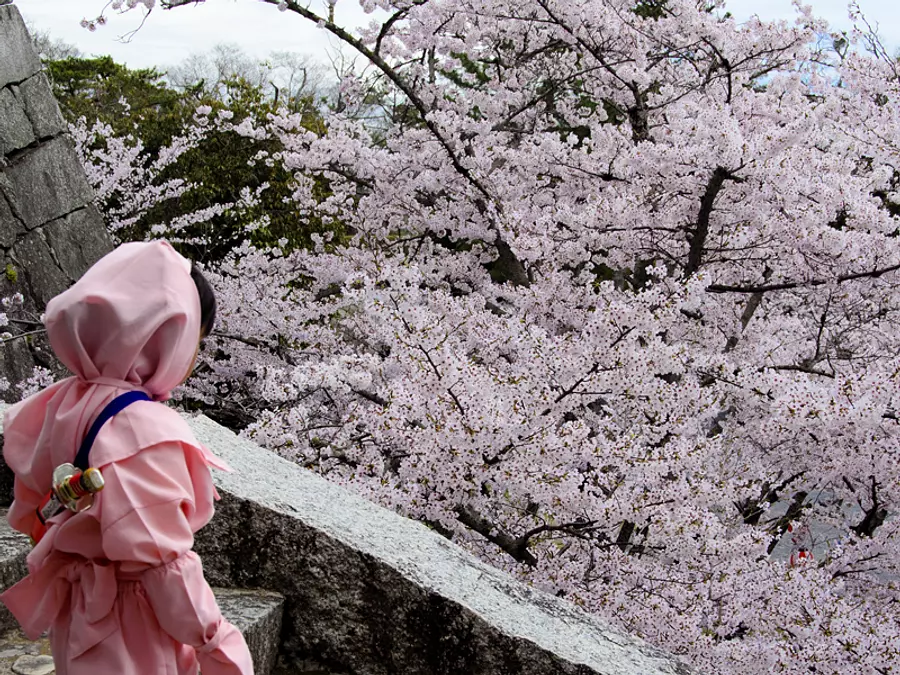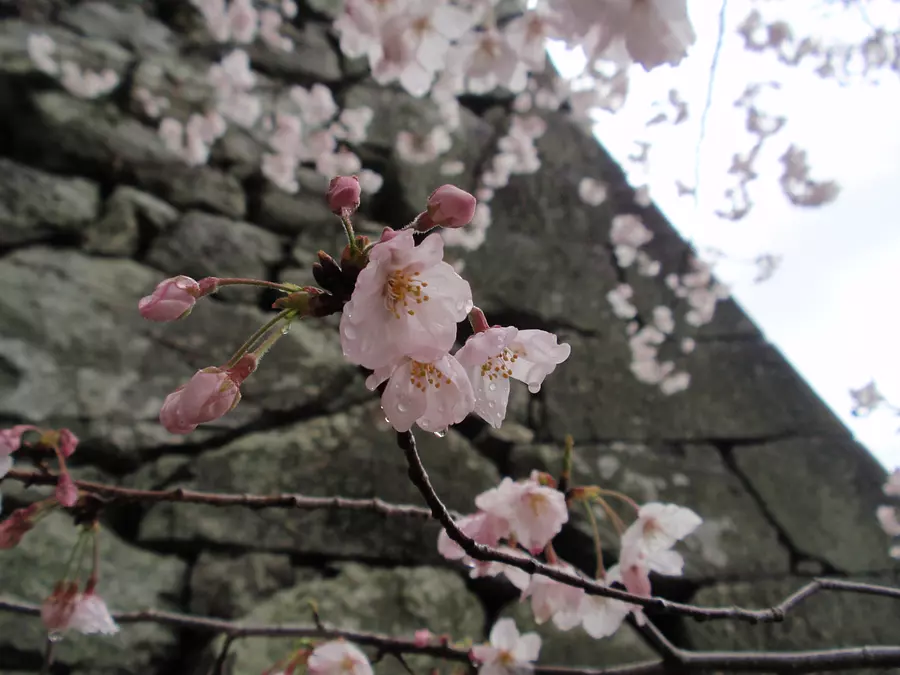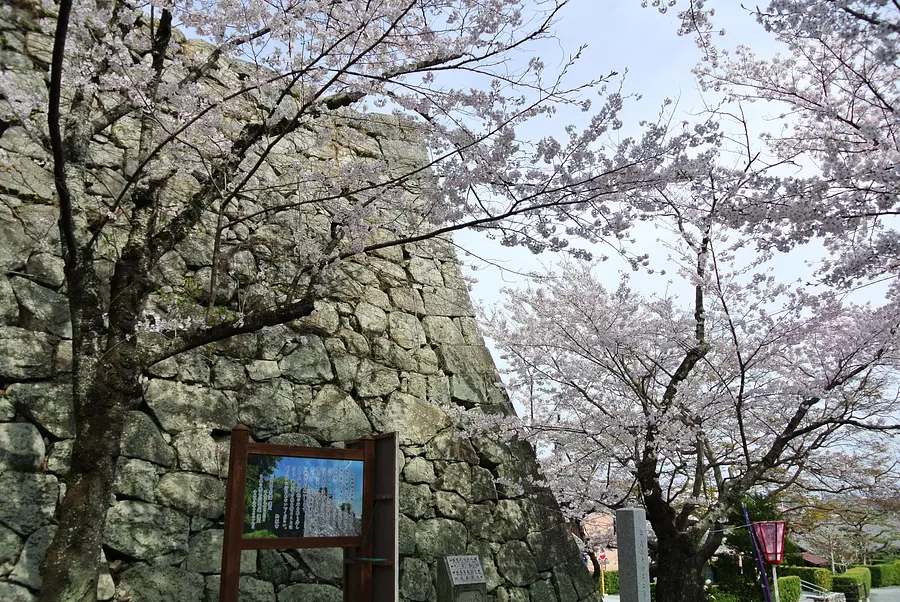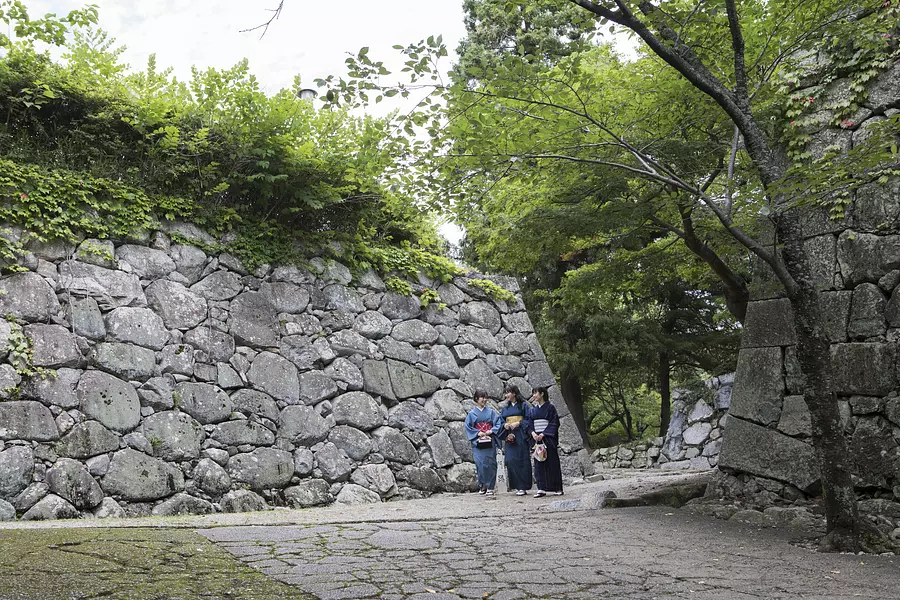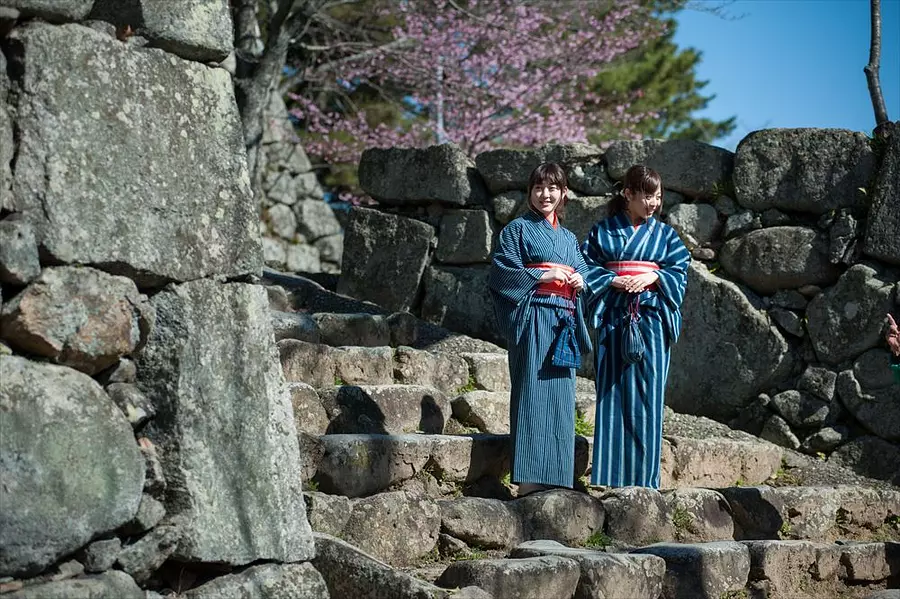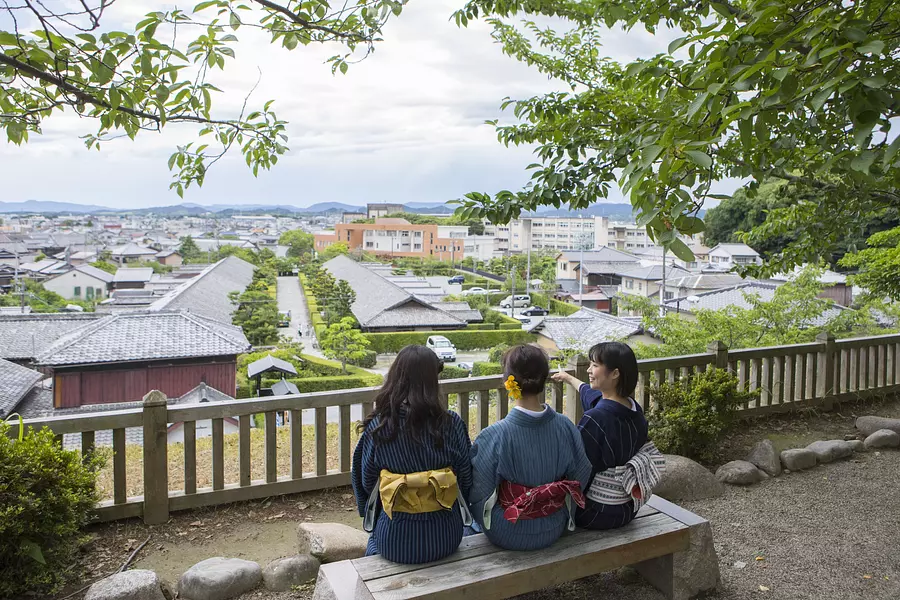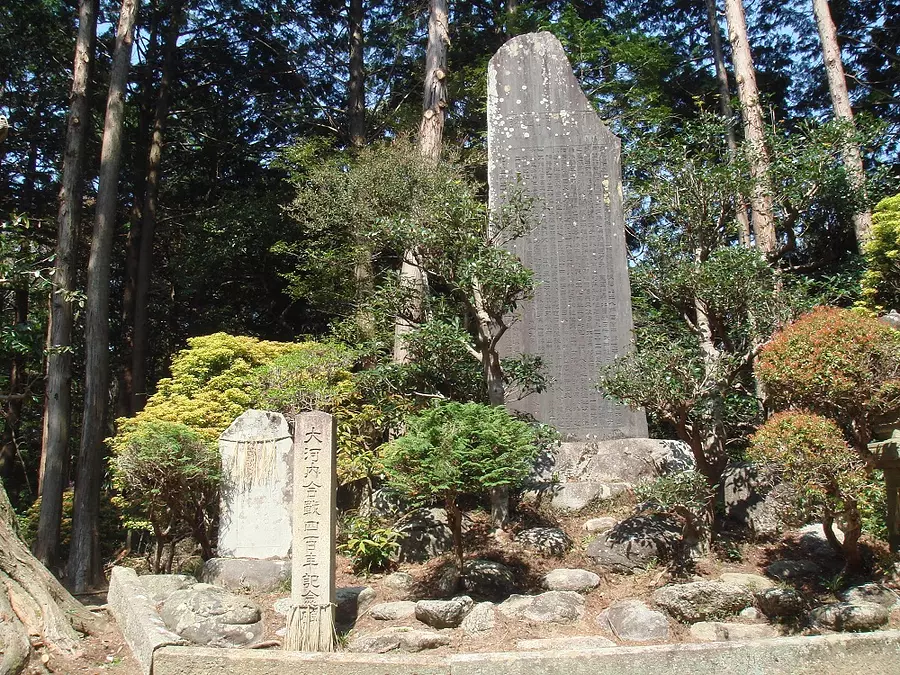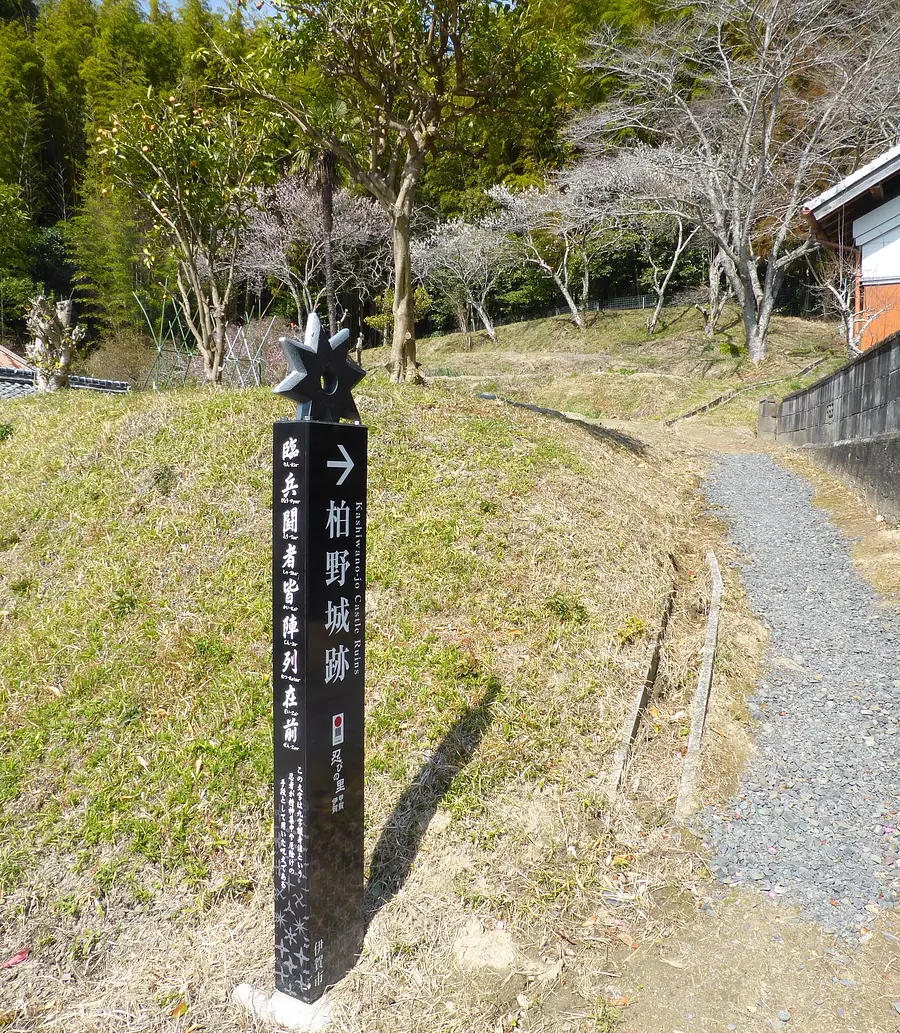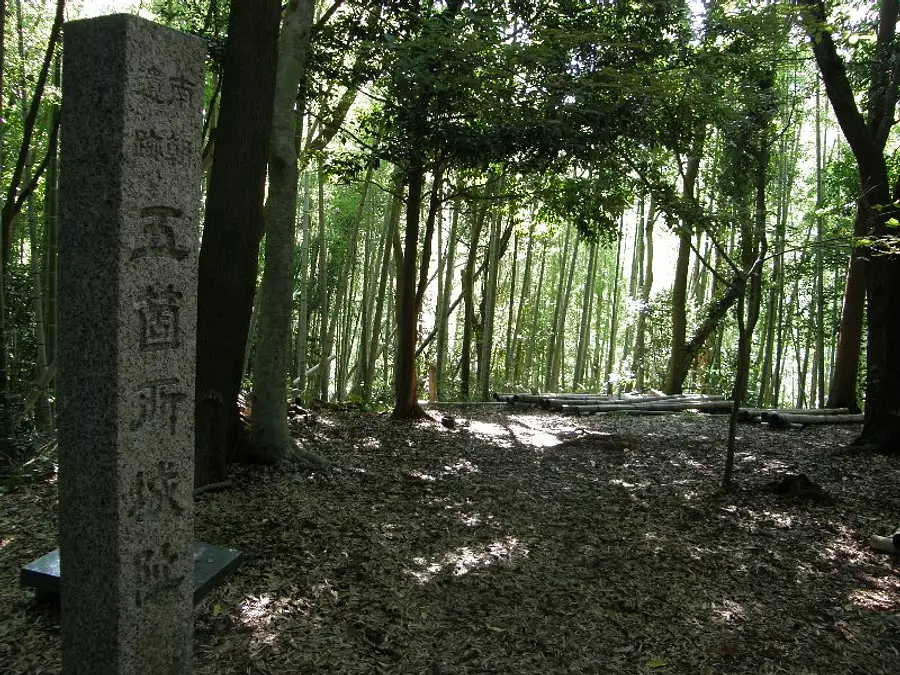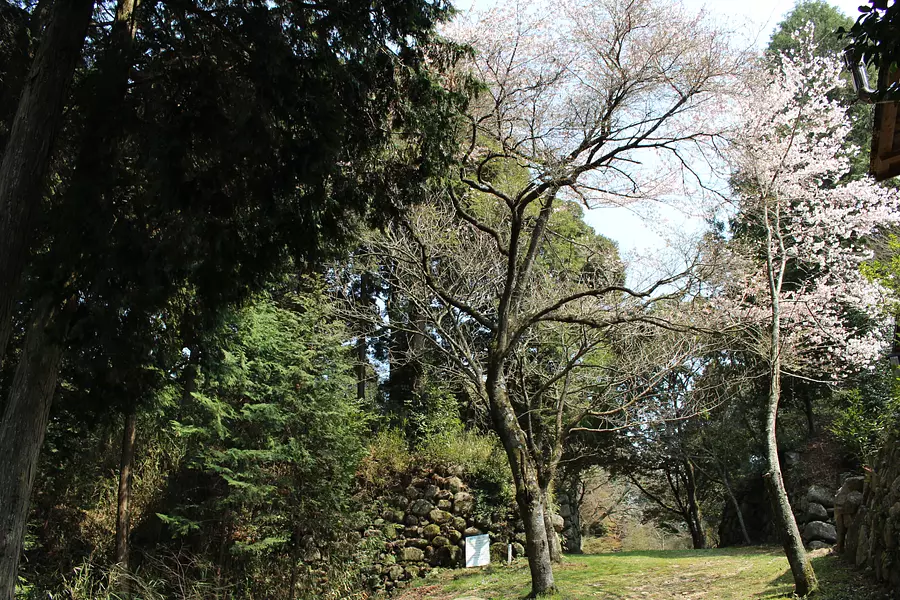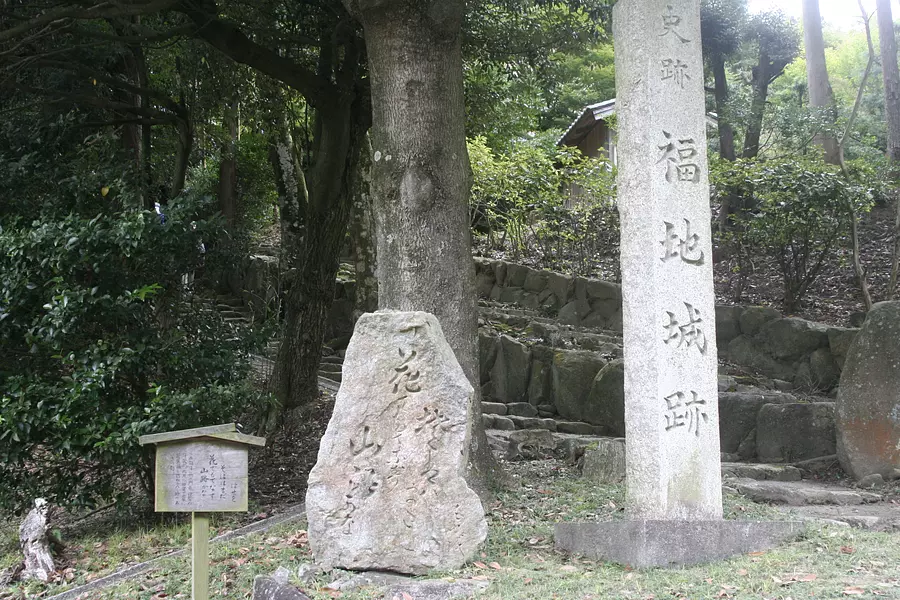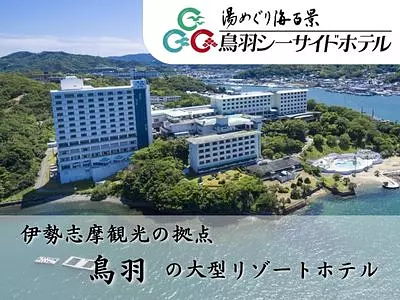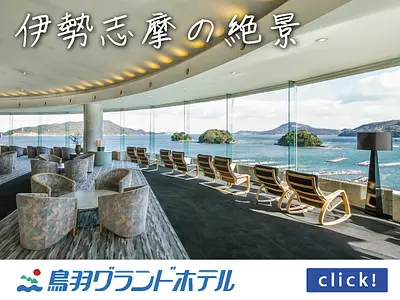Special feature on castles and castle ruins in Mie Prefecture ~Let's tour the castles of Mie~
掲載日:2022.05.09

This is a special feature on castles and castle ruins (castle ruins) in Mie Prefecture.
The number of history buffs who enjoy visiting castles is increasing, and castles and stone walls are attracting attention.
Some of them have been selected as one of the ``100 Famous Castles of Japan®'' and ``100 Famous Castles of Japan,'' which attract many castle fans.
There are many attractions in Mie Prefecture, including the ruins of Akagi Castle, built by master castle builder TakatoraTodo, and Iga Ueno Castle, which has a three-story castle tower.
〇 Castle seal commemorating the visit to the castle
Castle seals are now on sale in Kuwana, Iga Ueno, Ise Kameyama, Tsu, Matsuzaka, Tamaru, and Toba! Why not collect them to commemorate your visit to the castle? Please see the details page for each castle for the sales locations of castle seals.
〇 Mie Prefecture's castle stamp special feature ~ Get a castle seal in Mie Prefecture! ~
Click here to see the special feature on castle seals in Mie Prefecture.
〇Stamp rally in progress
A stamp rally is being held to visit seven castles in Kuwana, Iga-Ueno, Ise-Kameyama, Tsu, Matsuzaka, Tamaru, and Toba! If you collect stamps, you can win special products such as Matsusaka beef, Ise lobster, abalone, and other seafood, famous sweets, and more!
Please check this out for details
index
Kuwana Castle Ruins/ KyukaPark (KuwanaCity)
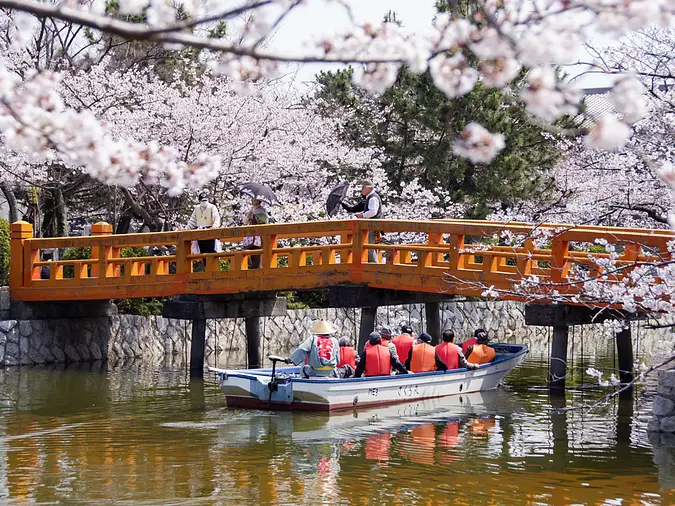
This park uses the Honmaru and Ninomaru ruins of the Kuwana Castle ruins, and is approximately 7.2ha in area.
The park holds cherry blossom festivals in April, azaleas in May, and irises festivals in June.
Related information
Gojo seal sales location: KuwanaCity Products Tourist Information Center
Yoshiura rest facility
Hajime, the tea shop at the post station
Kameyama Castle Ruins (KameyamaCity)
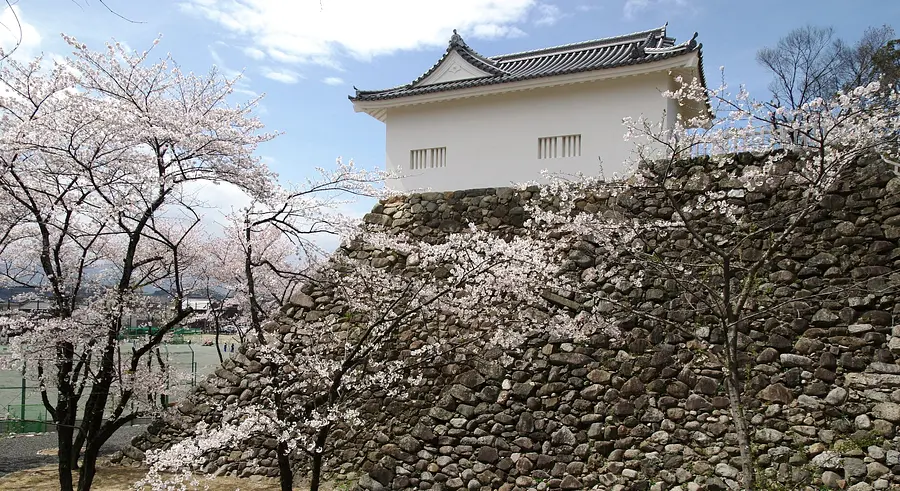
The castle was built in 1590 by Munenori Okamoto. The castle tower was lowered in the 9th year of Kan'ei (1632) during the reign of Yasumori Miyake, and the current Tamon Yagura was built on the ruins of the castle tower during the Shoho era (1644-1648) when Shunji Honda was the castle's lord.
It is a one-story building with painted white walls, a gabled roof, and gables on three sides, east, west, north, and was used as an armory during peacetime. As the only remaining castle building in the prefecture, it was designated as a prefectural historic site in 1952, and it is full of rustic charm, especially during the cherry blossom season and snowfall, and the Tamon Yagura, which towers over the high stone wall, still retains the same atmosphere as it did in the past. Masu.
Related information
Gojo seal sales location: KameyamaCity Tourism Association
(One company) KameyamaCity Tourism Association
664-2 Shinsho sekicho KameyamaCity
TEL: 0595-97-8877
kambe Ruins and kambe Park (SuzukaCity)
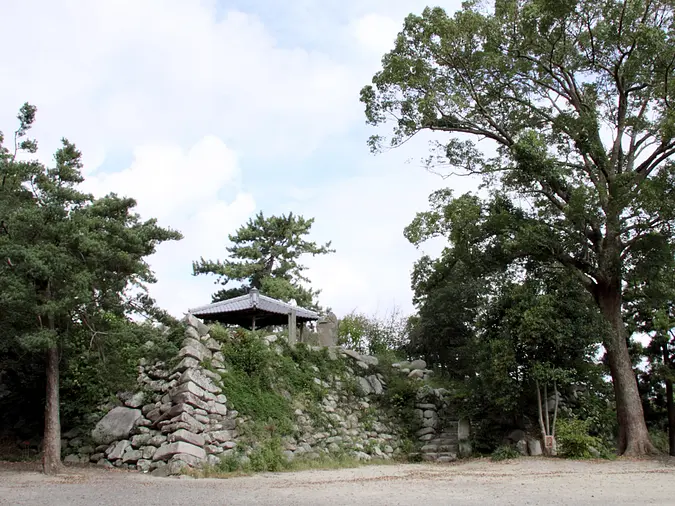
In 1580, kambe Kobe, ``the third son of Oda Nobunaga who was adopted into kambe family'', built a five-story castle tower, but today only the open stone wall remains, and the area nearby is kambe Park, a place of relaxation for citizens. It becomes.
Tsu Castle Ruins (TsuCity)

Oda Nobukae (Nobunaga's younger brother) built Tsu Castle in 1580. Since then, Tsu has developed as a castle town. The outer moat of the castle was built with a main enclosure at its center, and several river streams were incorporated into the castle's outer moat, making it a strong defensive castle despite being located in a low-lying wetland area.
Nowadays, only parts of the Honmaru, Nishinomaru, and Uchibori remain, but old pine trees grow on the three-story white walls of the reconstructed corner turret, and you can remember the past with the moss-covered stone walls.
It has also been selected as one of the top 100 castles.
Related information
Gojo seal sales location: Tsu Ekimae Tourist Information Center
Interview report: TsuCity 's oasis "Tsu Castle Ruins" is a power spot full of history and natural charm!
(One company) TsuCity Tourism Association
700 Hasokocho, Tsu TsuCity Asto Tsu 1st floor
TEL: 059-246-9020
Iga Ueno Castle (IgaCity)
TakatoraTodo, and today the inner moat, stone walls, and castle tower built in 1930 remain. Inside the three-story castle, there are weapons and armor, relics of the Todo family, and 46 ceiling paintings of famous people, including Yokoyama Taikan. The stone wall of the inner moat, which boasts one of the highest heights in Japan, is also a must-see.
In addition, local materials from IgaCity are on display. The current three-story castle tower was built by Mr. Katsu Kawasaki in 1933. It is also called Iga Cultural and Industrial Castle and is a designated cultural property of the city.
It has also been selected as one of Japan's 100 Famous Castles®.
Related information
9:00-17:00 (Admission until 16:45)
Castle seal sales location: Castle ticket sales counter
Interview report: Visiting Iga Ueno Castle with a storyteller. We will introduce in detail the history of the chalk castle, which was selected as one of Japan's 100 famous castles.
Iga Cultural Industry Association (Public Interest Incorporated Foundation)
TEL: 0595-21-3148
Matsusaka Castle Ruins (Matsuzaka Park) (MatsusakaCity)
The castle was built in 1588 by Ujisato Gamo. There are no buildings, only the stone walls of the mansion remain, but there is MotooriNorinaga Memorial Museum, the History and Folklore Museum, and GojobanYashiki of the samurai nagaya.
It is also a famous spot for cherry blossoms and wisteria, and is popularly known as Matsusaka Park. In February 2011, it was designated as a national historic site.
It has also been selected as one of Japan's 100 Famous Castles®.
Related information
Gojo seal sales location: Matsusaka Station Tourist Information Center
MatsusakaCity History and Folklore Museum
Town of wealthy merchants Matsusaka Tourism Exchange Center
Matsusaka Community Products Center
Details are introduced in "Every time we spin with a story" → Samurai Residences and the Town of Matsusaka "GojobanYashiki /Matsuzaka Castle"
(One company) MatsusakaCity Tourism Association
MatsusakaCity Kyomachi 507-2 MatsusakaCity Tourist Information Center
TEL: 0598-23-7771
Tamaru Castle Ruins (Tamagusuku Town, TamakiTown)
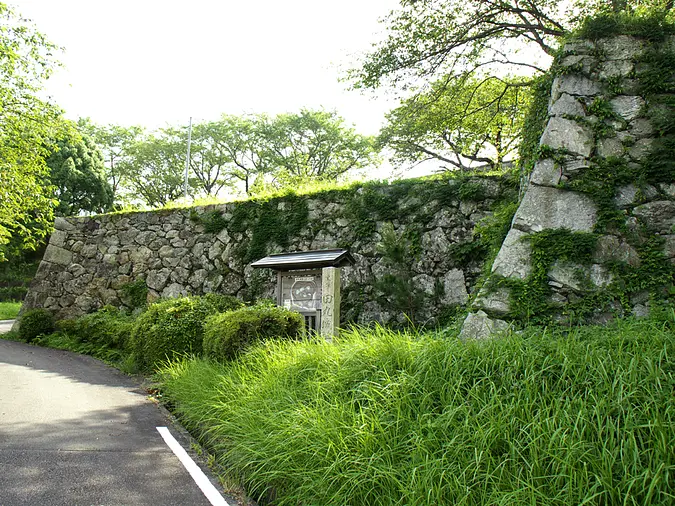
A castle ruin from the Nanbokucho period with a beautiful field-covered stone wall. It is said that Chikafusa Kitabatake and his son Kennobu built a fort on Mt. Tamamaru and used it as the base of the Southern Court. Tamaru Castle, Hirayama Castle, was built by Nobuo Oda in 1575, and the castle changed hands to the Inaba, Todo, and Kuno clans, and was abandoned in the 2nd year of Meiji.
It has also been selected as one of the top 100 castles.
Related information
There are stamp-type stamps (free) and premium castle stamps (charged).
Location: Ryuhei Murayama Memorial Museum
Toba Castle Ruins (TobaCity)
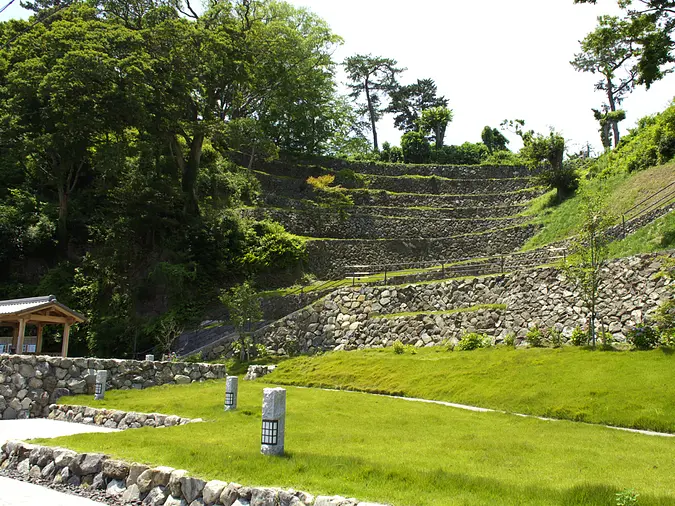
Yoshitaka Kuki built the castle in 1569. Since then, it has become the headquarters of the Kuki Navy.
It has an unusual shape in Japan, with the Otemon Gate protruding toward the sea, and the Otehato Sluice Gate served as the entrance and exit.
Today, Toba Elementary School was built on the site of Ninomaru, and the main enclosure remains the school's grounds.There are traces of it left in the stone walls of the castle tower, so a monument has been erected to the west of the bottom of the stone wall in the main castle tower.
Related information
Gojo seal sales location: TobaCity Tourism Association
TobaCity Tourist Information Center
Toba History and Culture Guide Center
(One company) TobaCity Tourism Association
1-7 Daimei oaki TobaCity
TEL: 0599-25-3019
Akagi Castle Ruins (Akagi Castle Park) and Tahirako Pass Execution Ground Ruins (KumanoCity)
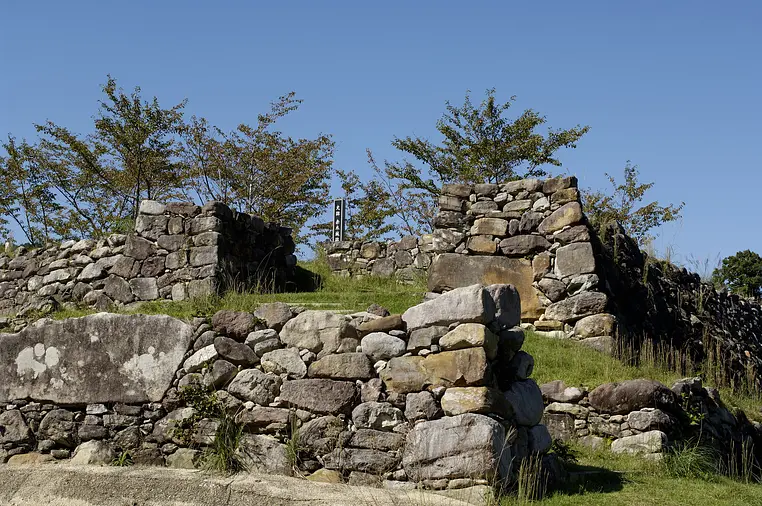
Akagi Castle is a flat mountain castle built by Todo Takatora, a master TakatoraTodo builder, using a combination of medieval and early modern castle construction methods, and has castle functions that can be considered the embryo of early modern castles. Also, the castle ruins floating in the morning mist are so fantastic that they are said to be castles in the sky. There are many cherry blossoms in the main building, and it is also known as a famous cherry blossom viewing spot.
It has also been selected as one of the top 100 castles.
Related information
Asaka Castle Ruins (Shiromai Castle Ruins) (MatsusakaCity)
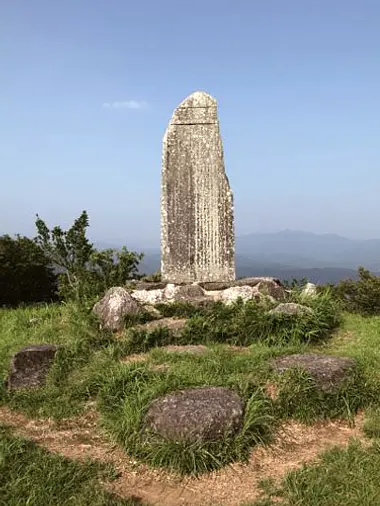
A mountain castle built on the top of a mountain over 300 meters above sea level, this is the residence of the Kitabatake clan.
It is said that the besieged Mitsumasa Kitabatake poured white rice on the back of his horse to make it appear as if there was water and repelled the shogunate army who were on a mission to cut off the water (Nanpokiden), and it is also known as ``Shiramai Castle.''
Mibuno Castle Ruins (IgaCity)
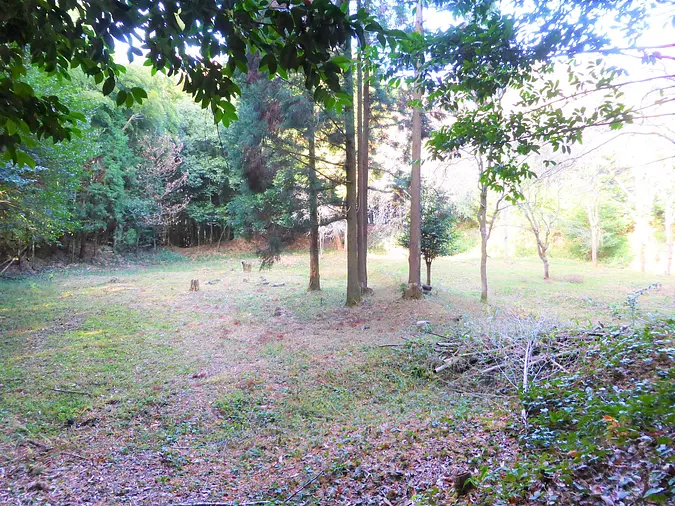
It is designated as a historic site by the city, and is also known as ``Shimizu Castle,'' and it is said that the castle was owned by the local feudal lord Shimizu Iwajo no Kami.
130 x 90m earthwork remains, date of construction: unknown
Tanabe Castle Ruins (InabeCity)
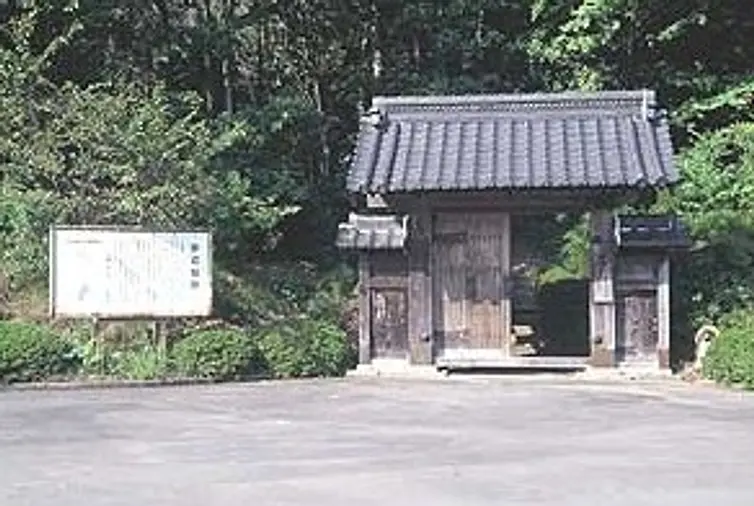
Of the 8 to 12 medieval castle ruins that are said to exist in our town, it has been named as a representative castle ruin because it has clear remnants, is the largest in scale, and is the most well-researched. It is known that during the Tensho era, it was the residence of Kizo Nagamasa, a descendant of the Kitabatake clan.
According to the literature, it was 200 ken (360 m) from north to south, 60 ken (110 m) from east to west, 30 ken (3000 m2) in Marunouchi, and 5 ken (9 m) wide in the moat (``Tenmei 4th Year Goryonai Kiki'').
Currently, a training facility for the elderly called ``Jukujinso'' is being built on the site.
Founding date: Tensho era (1573-1591)
Matsugashima Castle Ruins (MatsusakaCity)
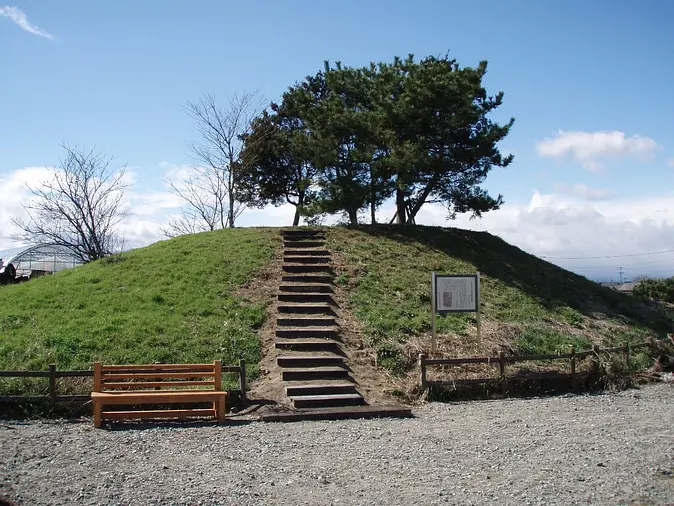
Located 500 meters east of the coastline on the right bank of the Miwatari River, a four-sided platform approximately 20 meters on each side, commonly called Tenshuyama, is thought to be the site of the Honmaru castle tower. Around the 10th year of Eiroku (1567), Tominori Kitabatake built a castle here at Hosokubi (former name of Matsugashima), but in 1567, when the Oda army attacked, he burned it down and abandoned the castle. In 1580, Nobunaga's second son Nobuo Kitabatake, who was adopted by Tomikyo, built a castle on the same site and renamed it Matsugashima Castle. Later, in 1992, Ujisato Gamo entered the castle and it prospered as a base of control over Minami Ise, but it was abandoned when Matsuzaka Castle was completed.
Okochi Castle Ruins (MatsusakaCity)
It was built within a 300m square area at the tip of a hill with an altitude of over 110m, with the Sakauchi River flowing at the east foot, the Yazu River at the north foot, and deep valleys surrounding the south and west foot, making it a natural stronghold. forming the earth. The castle's territory is centered around the Honmaru, with Oteguchi to the north and Atsuguchi to the south, Nishinomaru to the west, Ninomaru, Onato, Baba, etc. to the east, with moats and plateaus remaining in many places.
Kashiwano Castle Ruins at Tenrinji Temple (IgaCity)
In addition to these, there are over 500 medieval castle ruins in the Iga area, including the Fukuchi Castle ruins, Takeshima Castle ruins, and Mibuno Castle ruins.
On September 27, 1581, the Oda army of more than 12,000 men including Nagahide Niwa and Masuichi Takigawa invaded from Tsugeguchi, and the Iga clan from the northeastern part of Iga barricaded themselves in Kashiwano Castle and resisted, but they were outnumbered. They were outnumbered and quickly defeated.
Gokasho Castle Ruins (Minamiise Town MinamiiseTown)
It was the residence of the Aishu clan, a powerful clan in Ise that was active from the Nanbokucho period to the Sengoku period, and is also designated as a historic site in Mie Prefecture. Since it is a medieval mountain castle, there are traces of a moat and residence, but no stone walls. Near the castle ruins, there are graves of the Aisu clan called ``Aisu Clan Sub-temple,'' which give off the melancholy of the Sengoku period.
This is also the birthplace of the founder of Kageryu Kendo. Aisu Kage-ryu, which was popularized by Hisatada Ikosai of the Aisu clan, became the origin of Yagyu Shinkage-ryu and Tai Jyu-ryu.
Every August, the Kenso Festival is held to honor Kenso Ikosai, and martial arts offerings are performed by martial artists from various sects from all over the country.
Fukuchi Castle Ruins (IgaCity)
It was once the castle of Fukuchi Iyo no kami, but in 1898, to commemorate the 200th anniversary of his death, the owner, Mr. Uhachiro Matsuo, donated land on the ruins of Fukuchi Castle to leave Basho Park for future generations.
There is a monument in the park with the haiku ``Crying for my hometown and my umbilical cord.'' Also, on the way from Manju-ji Temple to Basho Park, there is a monument with a haiku from Nishimura Hakuungo, ``Basho-san and the Muradō no Katta-do'' (because everyone affectionately calls him ``Basho-san''). A 170 x 220m earthwork remains.
It is a place loved by the local community, and is a relaxing park where you can enjoy cherry blossom viewing in the spring and autumn leaves in the fall.
Tagusu Ruins (TobaCity)
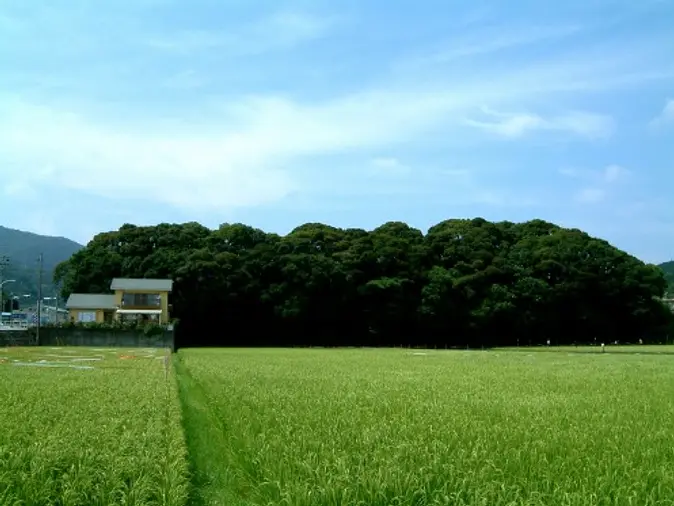
A castle ruin located on a hill near the confluence of the Kamo and Kawachi rivers.
Udono Castle (Kiho Town, KihoTown)
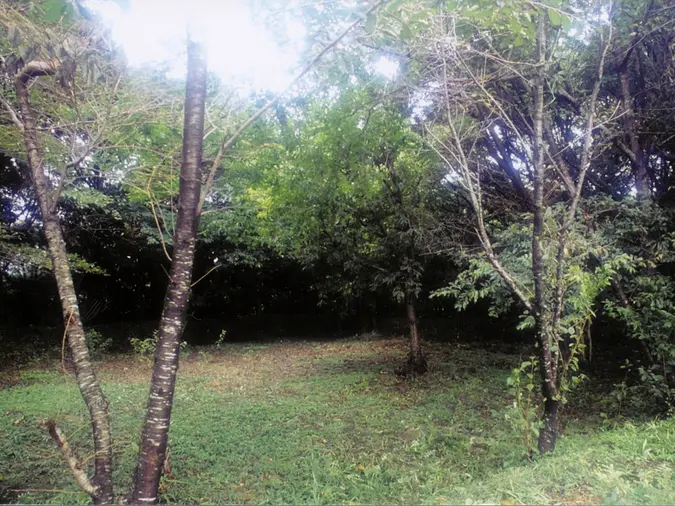
It is an oval-shaped site with a diameter of 35m and a short axis of 24m, built on the top of a small hill at the western end of Udono Village, and is a raised-style earthwork. It is said to have been built by the Udono clan (1000-1600). Founding year: unknown
[Recommended tourist information]
| Category | |
|---|---|
| season |




